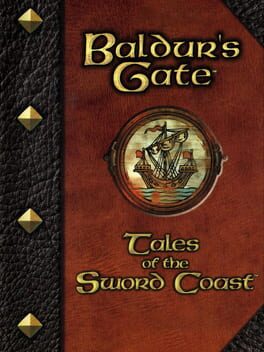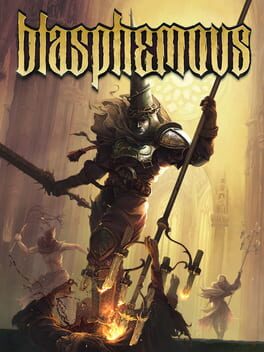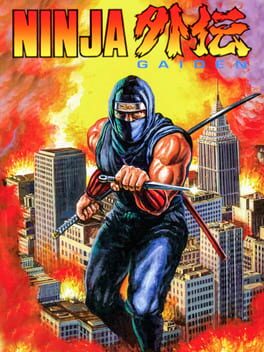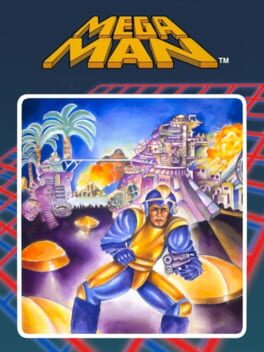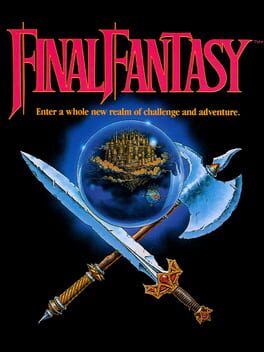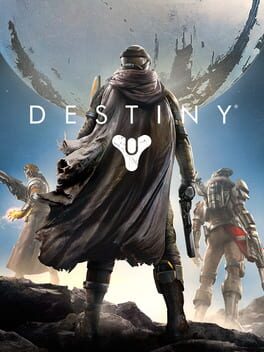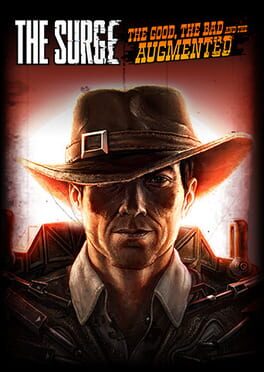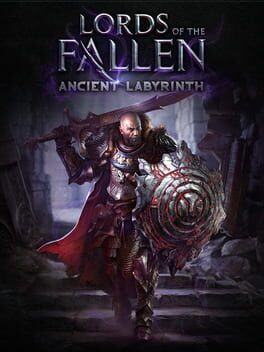squid0812
BACKER
The island of werewolves (or is it wolfweres?) is simply a few extra maps of standard Baldur's Gate side questing - which is to say it's enjoyable and worth your time without being especially revelatory.
The addition that makes this expansion truly stand out, though, is Durlag's Tower, which is arguably still the greatest prestige dungeon that BioWare has ever created, even after Baldur's Gate II and a bevy of Dragon Age and Mass Effect games. Six floors jam-packed with challenging monster encounters, thought-provoking puzzles, and plenty of evocative details and creepy atmospherics, the Tower acts as both a final exam for players to test their mastery of 2nd Edition mechanics and as an thrilling harbinger of the kind of rich and engaging side stories that are all over the place in Baldur's Gate II.
You won't lose much if you skip the Werewolf Island, but Durlag's Tower is not be missed.
The addition that makes this expansion truly stand out, though, is Durlag's Tower, which is arguably still the greatest prestige dungeon that BioWare has ever created, even after Baldur's Gate II and a bevy of Dragon Age and Mass Effect games. Six floors jam-packed with challenging monster encounters, thought-provoking puzzles, and plenty of evocative details and creepy atmospherics, the Tower acts as both a final exam for players to test their mastery of 2nd Edition mechanics and as an thrilling harbinger of the kind of rich and engaging side stories that are all over the place in Baldur's Gate II.
You won't lose much if you skip the Werewolf Island, but Durlag's Tower is not be missed.
2019
A flawed game with one particular aspect that stands out as S-tier: the astounding pixel art, which is possibly the best I’ve ever encountered in games. Whatever type of imagery you prefer, this game has it: the creepy, the surreal, the ineffable. A giant, blindfolded baby with bleeding eyes. A floating head pockmarked with scars and exposed brain matter. These are just a few of the more jaw-dropping examples in a game that is full of this kind of stuff. Even if this isn’t your type of game, you owe it to yourself to check out some screenshots - it really is that good.
Alas, every other part of the game registered as just OK for me. The combat is fun enough, but it’s also rather simplistic. Nearly everything that isn’t a standard attack, dodge, or parry feels tangential or only situationally useful. The various Metroidvania upgrades are all exploration-based and thus never play a role in combat as sometimes happens in other games of this ilk (i.e. Hollow Knight). Fundamentally, the combat moveset at the beginning of the game is very similar to the moveset at the end. It’s fine, there’s just not a lot of movement.
I feel similarly ambivalent about the platforming and exploration. I love the way the dodge feels in this game, but the jumping always felt a bit off for reasons I can’t describe. It didn’t happen a lot, but there were definitely times when I missed a jump or mantle that I felt like I should’ve had. Normally, I wouldn’t consider this a big deal, but when instant death spikes are in play (why?), even trivial amounts of platforming jank are unacceptable. Most of the really tough platforming is in optional areas, so at least there’s that. Speaking of which, there are plenty of cool, optional secrets here - illusory walls and riddles abound. Unfortunately, a lot of what you find are meaningless Kickstarter collectibles - this game sort of has a desperate need for more useful items that give you a reason to fully explore its world. It doesn’t help that your character never picks up any movement upgrades - I kept hoping to pick up a double jump or air dash that would make it more fun on a moment-to-moment basis to backtrack and scout out the map for secrets.
The stellar imagery and oppressive mood were enough to keep me going here - but a follow-up with some gameplay and story refinements (more direct storytelling and a little less figurative / lyrical mumbo-jumbo might help the plot stick a bit more) has the potential for greatness.
Alas, every other part of the game registered as just OK for me. The combat is fun enough, but it’s also rather simplistic. Nearly everything that isn’t a standard attack, dodge, or parry feels tangential or only situationally useful. The various Metroidvania upgrades are all exploration-based and thus never play a role in combat as sometimes happens in other games of this ilk (i.e. Hollow Knight). Fundamentally, the combat moveset at the beginning of the game is very similar to the moveset at the end. It’s fine, there’s just not a lot of movement.
I feel similarly ambivalent about the platforming and exploration. I love the way the dodge feels in this game, but the jumping always felt a bit off for reasons I can’t describe. It didn’t happen a lot, but there were definitely times when I missed a jump or mantle that I felt like I should’ve had. Normally, I wouldn’t consider this a big deal, but when instant death spikes are in play (why?), even trivial amounts of platforming jank are unacceptable. Most of the really tough platforming is in optional areas, so at least there’s that. Speaking of which, there are plenty of cool, optional secrets here - illusory walls and riddles abound. Unfortunately, a lot of what you find are meaningless Kickstarter collectibles - this game sort of has a desperate need for more useful items that give you a reason to fully explore its world. It doesn’t help that your character never picks up any movement upgrades - I kept hoping to pick up a double jump or air dash that would make it more fun on a moment-to-moment basis to backtrack and scout out the map for secrets.
The stellar imagery and oppressive mood were enough to keep me going here - but a follow-up with some gameplay and story refinements (more direct storytelling and a little less figurative / lyrical mumbo-jumbo might help the plot stick a bit more) has the potential for greatness.
2012
This review contains spoilers
Includes spoilers
Mass Effect 3, for all the ink that’s been spilled on it, remains a unique experience in 2021. Once justly derided for its ending, this game now functions as a sort of Rorschach test for how people feel about the series as a whole. This is a game that bizarrely includes some of the most genuinely moving and emotionally resonant moments you will ever experience in any video game (assuming you play 1+2 beforehand, at least) alongside moments of equally staggering stupidity (looking at you, Kai Leng). When this game works, it’s absolutely unforgettable. By the same token, when it’s at its worst, it’s incredibly frustrating.
Starting off with the positive - the Tuchanka and Rannoch storylines in this game are just so unbelievably satisfying and moving. The writers beautifully leverage characters and plot elements from the first two games to bring long-running arcs to their crescendos. I just can’t really imagine a person who played ME1 and 2 and isn’t just completely gutted by what happens to Mordin and / or Wrex in the Tuchanka storyline and to Tali in the Rannoch storyline. Even Legion, who really only made a cameo in the last 10% of ME2, gets a memorable resolution here that is full of well-earned pathos.
Indeed, interaction with companions is one of the major overall wins of ME3 - longtime stalwarts like Garrus and Liara also feel much more fleshed out and real. Pretty much all of the more brief interactions you have with former companions from previous games are spot-on, beautifully balancing nostalgia with the need to move the story forward (Grunt’s last stand is a standout). People justifiably rip on the ending of this game, but it’s also genuinely too bad that moments like the touching scene of saying goodbye to all of your teammates before the final battle or the shooting competition with Garrus in the Citadel got forgotten in the vitriol.
It’s unfortunate that the vitriol exists, but that doesn’t mean it’s not at least partially understandable. Yes, I think the ending is bad (even with the extended cut), but I would actually go further to say that basically anything involving Cerberus in this game is really dumb. I would love to know what jackass at BioWare thought it would be good idea to make one of the game’s main villains a generic space ninja (it was probably the same guy who thought up the equally stupid ‘human reaper’ as the final boss of ME2). The inanity of Kai Leng is a symptom of the larger issue, which is that the morally ambiguous conception of Cerberus from ME2 is thrown out the window, replaced by over-the-top mustache-twirling. This was the Illusive Man’s plan all along? Bumble his way into getting indoctrinated by the Reapers? Cerberus felt like they were building toward something cool in the second game - in ME3, it feels like they are only in the game so that there are humanoid enemy types available for multiplayer.
Which is another issue in and of itself - some of what makes Mass Effect games great was clearly sacrificed on the altar of multiplayer. Side questing and exploration, which were major parts of ME1 (and to a lesser degree, ME2) appear to be the big casualties of the multiplayer focus. Most of the side quests are reduced to simple planet scanning fetch quests that I would’ve rather had been left on the cutting room floor. The side quests that involve actual gameplay are just advertisements for the multiplayer (they take place in what are obviously multiplayer arenas).
Now for the elephant in the room - that ending. I agree that it’s not good. I do think people overstate the problem a bit, though. It is slight and underwhelming, to be sure. Also, I find the constant reminders of the kid who dies at the beginning to be really cheap and exploitative, a perfect example of an unearned emotional payoff. And yes, the choices are predictable, but ultimately I was OK with the outcome of the one I picked, even if I wasn’t particularly moved. Almost a decade on, I generally find the ending to be harmless and inoffensive. Weak praise, I know, but certainly more kind than most people were at launch.
ME3 is a fun game that hits some extremely satisfying high points while also frequently frustrating and annoying me. Still, if you’re a fan of the series, there’s no way you can miss this.
Mass Effect 3, for all the ink that’s been spilled on it, remains a unique experience in 2021. Once justly derided for its ending, this game now functions as a sort of Rorschach test for how people feel about the series as a whole. This is a game that bizarrely includes some of the most genuinely moving and emotionally resonant moments you will ever experience in any video game (assuming you play 1+2 beforehand, at least) alongside moments of equally staggering stupidity (looking at you, Kai Leng). When this game works, it’s absolutely unforgettable. By the same token, when it’s at its worst, it’s incredibly frustrating.
Starting off with the positive - the Tuchanka and Rannoch storylines in this game are just so unbelievably satisfying and moving. The writers beautifully leverage characters and plot elements from the first two games to bring long-running arcs to their crescendos. I just can’t really imagine a person who played ME1 and 2 and isn’t just completely gutted by what happens to Mordin and / or Wrex in the Tuchanka storyline and to Tali in the Rannoch storyline. Even Legion, who really only made a cameo in the last 10% of ME2, gets a memorable resolution here that is full of well-earned pathos.
Indeed, interaction with companions is one of the major overall wins of ME3 - longtime stalwarts like Garrus and Liara also feel much more fleshed out and real. Pretty much all of the more brief interactions you have with former companions from previous games are spot-on, beautifully balancing nostalgia with the need to move the story forward (Grunt’s last stand is a standout). People justifiably rip on the ending of this game, but it’s also genuinely too bad that moments like the touching scene of saying goodbye to all of your teammates before the final battle or the shooting competition with Garrus in the Citadel got forgotten in the vitriol.
It’s unfortunate that the vitriol exists, but that doesn’t mean it’s not at least partially understandable. Yes, I think the ending is bad (even with the extended cut), but I would actually go further to say that basically anything involving Cerberus in this game is really dumb. I would love to know what jackass at BioWare thought it would be good idea to make one of the game’s main villains a generic space ninja (it was probably the same guy who thought up the equally stupid ‘human reaper’ as the final boss of ME2). The inanity of Kai Leng is a symptom of the larger issue, which is that the morally ambiguous conception of Cerberus from ME2 is thrown out the window, replaced by over-the-top mustache-twirling. This was the Illusive Man’s plan all along? Bumble his way into getting indoctrinated by the Reapers? Cerberus felt like they were building toward something cool in the second game - in ME3, it feels like they are only in the game so that there are humanoid enemy types available for multiplayer.
Which is another issue in and of itself - some of what makes Mass Effect games great was clearly sacrificed on the altar of multiplayer. Side questing and exploration, which were major parts of ME1 (and to a lesser degree, ME2) appear to be the big casualties of the multiplayer focus. Most of the side quests are reduced to simple planet scanning fetch quests that I would’ve rather had been left on the cutting room floor. The side quests that involve actual gameplay are just advertisements for the multiplayer (they take place in what are obviously multiplayer arenas).
Now for the elephant in the room - that ending. I agree that it’s not good. I do think people overstate the problem a bit, though. It is slight and underwhelming, to be sure. Also, I find the constant reminders of the kid who dies at the beginning to be really cheap and exploitative, a perfect example of an unearned emotional payoff. And yes, the choices are predictable, but ultimately I was OK with the outcome of the one I picked, even if I wasn’t particularly moved. Almost a decade on, I generally find the ending to be harmless and inoffensive. Weak praise, I know, but certainly more kind than most people were at launch.
ME3 is a fun game that hits some extremely satisfying high points while also frequently frustrating and annoying me. Still, if you’re a fan of the series, there’s no way you can miss this.
1988
Conceivably the smoothest and most responsive action platformer on the NES. It's a game that requires precision from the get-go, which makes the first 4 or 5 levels function almost like a rhythm game. The most satisfying way I found to play was to die a lot while memorizing the level and then, once the level was solidly etched into my cerebellum, simply hold down the forward button and enter a fugue state as I rapidly input a cadenced set of jumps and slashes.
For most of the game, this works pretty well. It's a game much more about the hands than the head, which will never be ideal for me. But the slick platforming, paired with some hilariously over-the-top cutscenes, makes for an entertaining mixture.
Then comes the last level.
Level six of Ninja Gaiden has to be one of the cheapest and most demoralizing game sequences on this side of Battletoads. The level of precision required elevates to a whole new level (you basically have to be frame-perfect in several areas). The enhanced difficulty exacerbates some of the NES-era BS (i.e. enemies who respawn the instant their former position goes off screen) that was easier to swallow in the more forgiving early levels. Save states have largely obviated this last issue, but it's hard to overstate how demoralizing it is die on the (extremely tough) final boss and then discover that the last three checkpoints were effectively meaningless. It's not even a darkly amusing troll like the end of Ghosts n' Goblins; it's just sadism, pure and simple. And that's a shitty note to end on.
For most of the game, this works pretty well. It's a game much more about the hands than the head, which will never be ideal for me. But the slick platforming, paired with some hilariously over-the-top cutscenes, makes for an entertaining mixture.
Then comes the last level.
Level six of Ninja Gaiden has to be one of the cheapest and most demoralizing game sequences on this side of Battletoads. The level of precision required elevates to a whole new level (you basically have to be frame-perfect in several areas). The enhanced difficulty exacerbates some of the NES-era BS (i.e. enemies who respawn the instant their former position goes off screen) that was easier to swallow in the more forgiving early levels. Save states have largely obviated this last issue, but it's hard to overstate how demoralizing it is die on the (extremely tough) final boss and then discover that the last three checkpoints were effectively meaningless. It's not even a darkly amusing troll like the end of Ghosts n' Goblins; it's just sadism, pure and simple. And that's a shitty note to end on.
One of the many strange little oddities that Nintendo developed for the 3DS. The baseball minigames that make up the brunt of the content here are amusing in the way that most well-made minigames are - which is to say, they are fun right up until they aren't. What's really memorable here, though, is the sad-sack dog who runs the sporting store, and the way he shamelessly haggles in an effort to convince the player to spend real-life money buying more minigames. Yes, that's right - Nintendo effectively programmed a Nintendo marketing employee into their game. It's actually not as obnoxious as it sounds, especially given that there's a fairly charming mini-narrative draped over the capitalism. More to the point, this is all largely a moot point given that the 3DS shop has gone the way of the dodo. Still, yet another notable instance of Nintendo ingenuity, even if this one is largely dedicated to clawing a few more bucks out of your wallet.
1987
The first take on this quintessential series of action platformers is mildly enjoyable but also frequently frustrating. The classic Mega Man formula - fight a series of bosses in any order, claiming their powers as you go - is here in spades, and the charming simplicity of that format goes a long way. Still, a lot of the trimmings that would make some of the sequels so memorable are pretty rough here. Most of the levels and enemy designs are fine enough in the wireframe, but they don't come close to the level of charm that we would see in Mega Man 2 or 3. The bosses, while affably goofy, are mostly limited to jumping around and throwing things at you. And then there's the straight BS - the janky-ass platforms in Gutsman's level, the dreaded disappearing blocks in the Iceman and Elecman levels, all of the times the game exposes you to unavoidable damage (those hopping screw-like enemies are the worst). The four-level slog that is Dr. Wily's fortress is enough to drive me up a wall.
The Mega Man ethos, evident here even in the early days, is charming enough make this more good than bad for me, but be prepared to deal with a lot of awful ideas that were thankfully ditched in later games.
The Mega Man ethos, evident here even in the early days, is charming enough make this more good than bad for me, but be prepared to deal with a lot of awful ideas that were thankfully ditched in later games.
1987
A pretty rough take on the JRPG genre that was revolutionary at the time of release, mostly because it pioneered the then-novel concept of mashing together a bunch of features stolen straight out of D and D with the unique sense of weirdness peculiar to Final Fantasy. It's actually fairly shocking how many of the Final Fantasy staples are here, even in the earliest days of the franchise - the airship, elemental crystals, an absolutely excellent soundtrack ('Matoya's Cave' - chef fingers!!). Unfortunately, many of the most annoying early JRPG tropes are also present here in spades - extremely vague directions on what to do next, a barebones storyline (what Garland / Chaos is up to is cool, but it just doesn't impact the majority of your playtime), and the outright necessity of grinding to keep your party powerful enough to progress. I was engaged in the story for the first hour and the last hour, but in between is about 30 hours of dungeon crawling with very little context or exterior motivation (to be fair, there are occasionally some quirky and interesting enemy and dungeon designs).
As a quick FYI, be sure to use a guide for your magic users - a number of the spells in this game straight up don't work.
As a quick FYI, be sure to use a guide for your magic users - a number of the spells in this game straight up don't work.
2014
I’m always rather taken aback by those who argue that the original Destiny is preferable to the sequel. I suspect it’s nostalgia speaking, because it seems to me that the original game is merely a rough draft for what Destiny 2 would eventually become. The shooting is as satisfying and polished as ever, but that isn’t enough to make up for the endless grind and lack of things of do, especially prior to The Taken King expansion (which mercifully added bosses that did more than simply lumber around as massive bullet sponges). Levels like the moon and the cosmodrome are also rather bland and ugly compared with those of the sequel. The story content, which has clearly never been a huge focus for Bungie, is especially half-assed here. Since the story and lore are so perfunctory, no one should feel bad starting with the sequel.
2017
I didn't really get into this until roughly a year and a half after release, so I can't speak about the more barren status of the game immediately post-release. But by the time I got to it, however, this was pretty much the peak of what this type of game can be for me: extremely smooth and tactile shooting, dense and good-looking environments, and, most importantly, fun things to do as you watch the numbers go up. Playing online loot shooters like this may be a fundamentally soulless activity, but it's still something that Bungie managed to actually figure out how to make the grind fun. Gambit Prime is a genuinely excellent and addictive fusion of PvP and PvE. The strikes, especially those added with the Forsaken expansion, take place in more imaginative environments and have much more varied boss fights. Surprisingly, Bungie actually put a modicum of effort into the story content. It's not spectacular or anything, but it's at least competent and it gives the player something to hold onto in a way that was completely missing in the original game. As The Taken King did with first Destiny, Forsaken added a LOT of the appeal that makes this playable over a longer period. I stopped playing right before Shadowkeep came out, mostly because these games have a fairly limited shelf life for me. But, unlike with the original game, I actually hold some positive memories of this one.
A very unnecessary DLC that unfortunately bills itself as if it will have valuable story content - it does not. This is a series of combat arenas with a variety of gimmicks. In one level, you may have to fight in the shadows due to sun-inflicted AOE damage, while in another, you might have to defend a platform from waves of enemies, and so on. The levels culminate in one of three extremely unimaginative bosses (what if there was a normal enemy that wore a cowboy hat and had inflated HP???). The whole thing is spruced up with the flavor of a generic Western setting, presumably to make it seem like more work went into this than really did. I like the combat in The Surge - but certainly not enough to engage with it for its own sake. If this was free, I wouldn't have bothered writing this - but the fact that they charge money for this really sticks in my craw.
A game lacking in the landscape-altering ingenuity that distinguishes some of the other recent From Software titles, Sekiro is content with merely being very good. What this game does have is an immensely satisfying interplay between challenging combat and intuitive stealth. Learning to master the complex interaction between attacking, blocking, evasion, and use of the different prosthetic tools is extremely fun. You will die A LOT getting to the point where you’ve mastered it (the early game is arguably a little too unforgiving), but once you hit cruising altitude the game really sings.
From a narrative and world building perspective, this is less unique than other From games like Dark Souls - most of the writing, while serviceable in its own right, lacks the evocative quality that distinguishes the Souls games. Many of levels are well-designed in terms of the wireframe, but the majority of the game takes place in rather repetitive villages and snowy mountains. On the video game curve, the story is rather good, but it’s not especially memorable.
On the whole, this is really a B-level effort for From - which is to say that it shouldn’t be missed.
From a narrative and world building perspective, this is less unique than other From games like Dark Souls - most of the writing, while serviceable in its own right, lacks the evocative quality that distinguishes the Souls games. Many of levels are well-designed in terms of the wireframe, but the majority of the game takes place in rather repetitive villages and snowy mountains. On the video game curve, the story is rather good, but it’s not especially memorable.
On the whole, this is really a B-level effort for From - which is to say that it shouldn’t be missed.
2016
A problematic game. In some ways, this game is the most refined in the series - the level design is dense and full of secrets and the environments, bosses, and enemy designs are consistently imaginative and creepy. But this game is lacking in many of the features that made Demon’s Souls, Dark Souls, and even the much-maligned Dark Souls II so memorable. It’s hard to overstate, for instance, how disheartening it is that the under-baked narrative of this game is basically just a collection of Easter eggs and retreads from earlier Souls titles. The second half of the game is also filled with bosses and enemies that have effectively infinite stamina, leading to some drawn-out slogs with inflated difficulty (saying this as someone who has beaten this game shieldless and who generally speaking doesn’t have a hard time with it - it is not fun to fight enemies that just constantly attack with no break). This emphasis on difficulty feels like a fundamental misunderstanding on the part of the developers - the original Dark Souls was great because it tested your mind, not your reflexes. The linear world design is also a major disappointment that saps a lot of the replay value out of the game - starting a Dark Souls game by consciously choosing to take on a harder area first is a satisfying experience that is completely missing here.
With the caveat that this my least favorite modern From game out of the way, I’ll finish by saying that this game is still a lot of fun, and that you should play it. Just don’t expect something revolutionary like the original game.
With the caveat that this my least favorite modern From game out of the way, I’ll finish by saying that this game is still a lot of fun, and that you should play it. Just don’t expect something revolutionary like the original game.
I know that have these companies have the bottom line to worry about, but it is still really frustrating to see so many developers churn out crap DLC just for the sake of it.
The title really gives this one away. The DLC adds a generic labyrinth to the game. There is really nothing to the aforementioned maze - it’s another crypt-like environment in a game that is full of them. The new enemies are just skeleton warriors with obnoxiously inflated damage and health. There is also some vague lore BS about how this maze is where the gods of game world were trapped an eternity ago. Well, they couldn’t have been that impressive since they apparently couldn’t pull a few levers and traverse a couple hallways.
The boss at the end actually has a unique gimmick, unlike most of the base game bosses. Unfortunately, that gimmick is sort of cheap because it is poorly signaled and can lead to instant death. I give them a half a star for trying though.
The title really gives this one away. The DLC adds a generic labyrinth to the game. There is really nothing to the aforementioned maze - it’s another crypt-like environment in a game that is full of them. The new enemies are just skeleton warriors with obnoxiously inflated damage and health. There is also some vague lore BS about how this maze is where the gods of game world were trapped an eternity ago. Well, they couldn’t have been that impressive since they apparently couldn’t pull a few levers and traverse a couple hallways.
The boss at the end actually has a unique gimmick, unlike most of the base game bosses. Unfortunately, that gimmick is sort of cheap because it is poorly signaled and can lead to instant death. I give them a half a star for trying though.
2010
A mildly interesting failure. I started off hating the story and rather liking the gameplay, and ended up with something closer to the opposite. I’m more or less convinced that there is no video game protagonist less likable than the pretentious, self aggrandizing man-child known as Alan Wake. Seriously, this dude is the worst, and I had a hard time believing that the devs wanted me to sympathize with this asshole. The other characters typically aren’t much better (Barry, the literary agent, is really the only other one who is fully developed and he is a stock comic relief character of the most annoying variety). It wasn’t until I stopped taking the story seriously and started to chuckle at some of the (unintentional?) humor - mostly generated by the drunken, trigger-happy FBI agent who shows up out of nowhere a few chapters in - that I started to tolerate it. I don’t quite get the admiration for the meta-textual accoutrements the story toys around with - some of the details are mildly clever (it’s fun to read hints of what is going to happen later in the game as you collect Alan’s manuscript), but I was disappointed that the game doesn’t really do anything truly imaginative with the melding of fiction and reality until the DLC.
As I mentioned above, I started off appreciating the tension generated by the gameplay - fiddling with batteries, different weapons, etc. I especially enjoyed the tension of trying desperately to run to the next light source without being overwhelmed. The problem: the game never really builds on this, at least until the DLC. You’ll spend all 12 hours of this more or less repeating very similar encounters with repetitive enemies in extremely familiar settings (80% of this takes place in the woods). The lack of imagination here is dire. Frustratingly, the game does finally introduce a potentially interesting, new mechanic - in the last 10 minutes, with no opportunity to actually develop it. Again, the DLC is mildly more engaging in this regard, but on the whole, the failure to build upon the initial gameplay loop here is very close to a fatal flaw.
A game that’s ultimately more bad than good for me, but it’s not without a few points of interest.
As I mentioned above, I started off appreciating the tension generated by the gameplay - fiddling with batteries, different weapons, etc. I especially enjoyed the tension of trying desperately to run to the next light source without being overwhelmed. The problem: the game never really builds on this, at least until the DLC. You’ll spend all 12 hours of this more or less repeating very similar encounters with repetitive enemies in extremely familiar settings (80% of this takes place in the woods). The lack of imagination here is dire. Frustratingly, the game does finally introduce a potentially interesting, new mechanic - in the last 10 minutes, with no opportunity to actually develop it. Again, the DLC is mildly more engaging in this regard, but on the whole, the failure to build upon the initial gameplay loop here is very close to a fatal flaw.
A game that’s ultimately more bad than good for me, but it’s not without a few points of interest.
Strangely enough, this is my favorite piece of Alan Wake content. Finally, after leaving us to wander through extremely repetitive forests throughout the majority of the base game, the devs at Remedy actually decided to introduce some genuinely weird and unsettling environmental details. For a game that’s at least partially concerned with dream logic, it’s pretty stunning to me that this theme didn’t really manifest in the setting until the last DLC, but it’s a welcome shift nonetheless. The combat is also a significant improvement over the first DLC - it maintains the inventive scenarios and mechanical variety while making it a lot less unrelenting and tedious. I also appreciated the narrative thrust, which is basically Alan Wake coming to terms with the fact that he is a terrible person.
Now comes the part where I have to mention that this ends with one of the most idiotic and unnecessary boss fights in recent memory. Still, it’s a move in the right direction.
Now comes the part where I have to mention that this ends with one of the most idiotic and unnecessary boss fights in recent memory. Still, it’s a move in the right direction.
